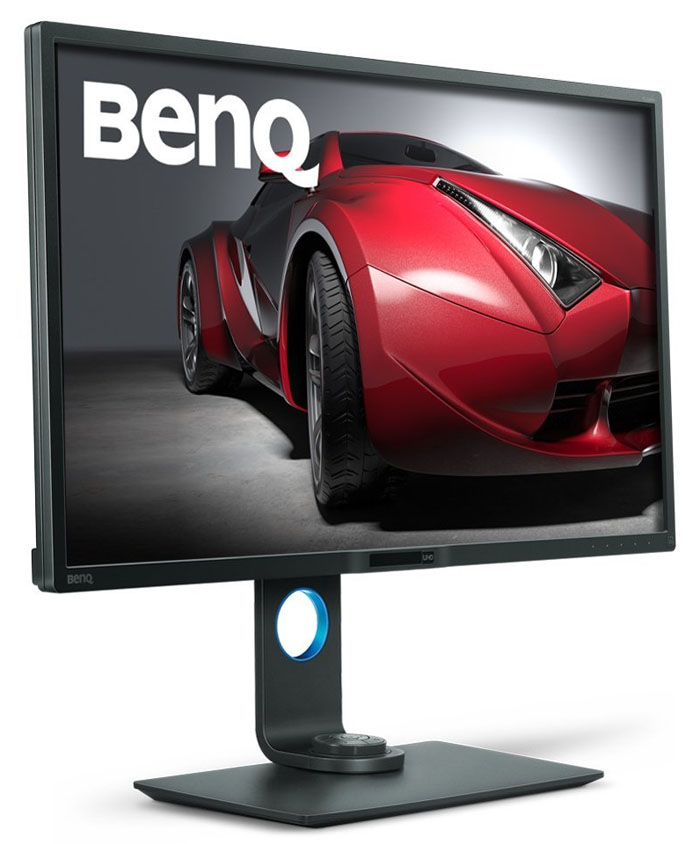Early Verdict
It’s hard to imagine that there’s a monitor more ready to go out-of-the-box than the BenQ PD3200U. Not only does it look great and measure well, calibration is completely unnecessary. Though not billed as a professional display, it easily competes with the most expensive monitors we’ve reviewed. If you don’t need a factory-certified calibration or a wide-gamut, almost nothing else comes close. The Philips BDM3270 is similarly accurate but only offers QHD resolution. Ultra HD has come a long way since its super expensive introduction. For less than $1000, BenQ easily hits this one out of the park.
Pros
- +
Out-of-box color
- +
Gamma, and grayscale accuracy
- +
Image clarity
- +
Build quality
- +
OSD controller
- +
Value
Cons
- -
Screen uniformity (sample-specific)
Why you can trust Tom's Hardware
Introduction
It wasn’t long ago that early adopters were paying upwards of $3000 to be the first on the block with an Ultra HD monitor. Now it’s easy to find models for under $1000, even in the 32” size. While the high pixel densities of smaller screens are appealing, there’s nothing like having a jumbo screen sitting on your desk.
With lower prices come more choices (or is it the other way around?). BenQ has already impressed us with its value-oriented BL3201PT, which we reviewed about a year ago. More recently, it introduced a new line of designer monitors. The term refers to the intended task rather than styling. Priced below comparable professional displays, they offer a similar level of accuracy along with high build quality. We’ve already reviewed the PD2700Q, a sweet 27” IPS/QHD screen that did well in our benchmark and usability tests. Today we have the 32” UHD version in the lab. Let’s take a look at the PD3200U.
Specifications
Packaging, Physical Layout & Accessories
Most 32” UHD monitors cost around $1000. Some professional screens sell for more than that. The NEC PA322UHD is a notable example. That extra coin buys a wide Adobe RGB gamut and factory-certified calibration. If you’re willing to forgo those features, the PD3200U represents a great choice. It sports an sRGB gamut with native 10-bit color and an AHVA panel. There’s no factory calibration data sheet in the box, but as you’ll see shortly, it aces our accuracy tests and out-distances many professional screens after they’ve been calibrated.
Build quality is first rate, as we’ve come to expect from BenQ. In fact, only NEC offers a comparable level of ruggedness. It’s likely this monitor will become a long-term purchase—fitting, then, that it won’t demand an investment north of $3000. Additional features include a flicker-free backlight, OSD puck controller, and a comprehensive set of calibration controls; though in the case of our sample, they aren’t needed. The panel boasts wide viewing angles and a slightly-higher-than-average response time of 4ms. On paper, the PD3200U looks like a keeper.
Product 360
The box is sturdy but perhaps a little shallow for such a heavy display. There’s plenty of foam protecting the panel, upright, and base, which assemble without tools. Still, we’d like to see a bit more volume in the carton to protect against rough handling.
Bundled cables include DisplayPort, HDMI, and USB. The power supply is internal and connected via an IEC cord. In a small box, you’ll find the OSD puck controller, which connects to a dedicated mini-USB port on the input panel. Supporting software and documentation are provided on a CD, or they can be downloaded from BenQ’s website.
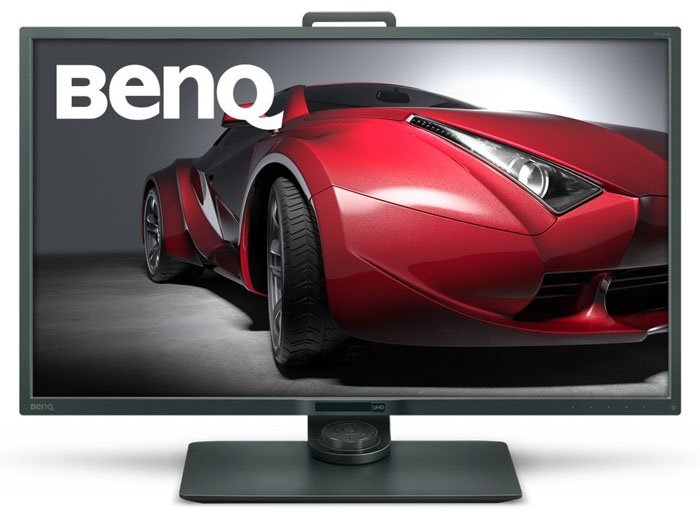
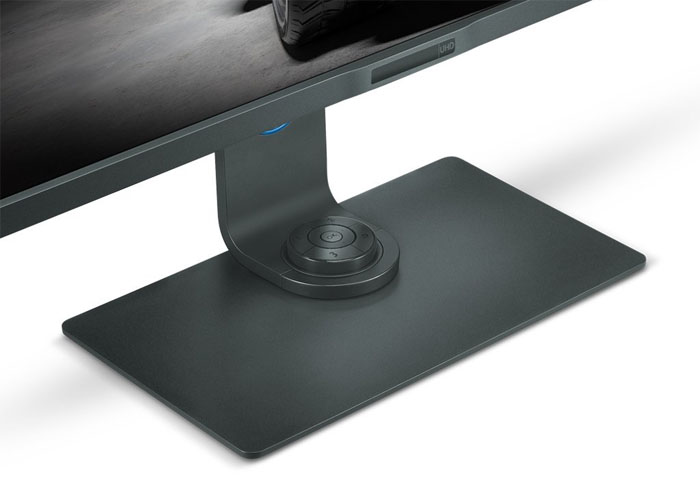
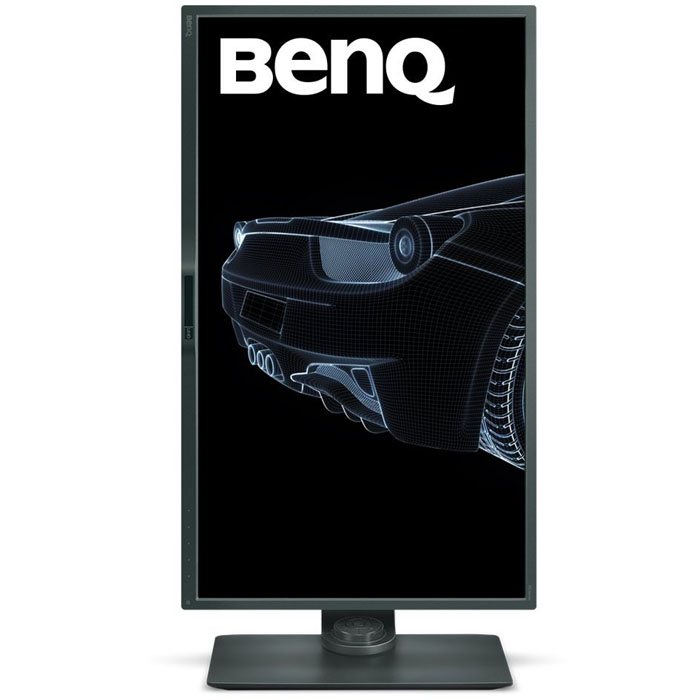

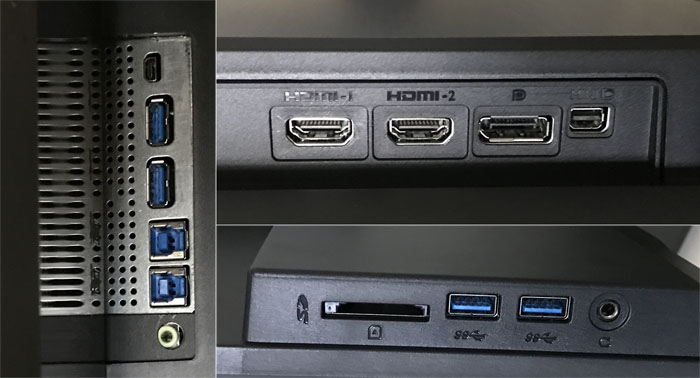
The first adjective that comes to mind when assembling the PD3200U is “beefy.” This is one substantial monitor, and at nearly 30 pounds it requires thought when moving. BenQ has cast a handle into the solid-aluminum upright to make this easier. At the bottom of said upright is a small nest for the OSD puck. Its cord is long enough that you can put it anywhere on your desk within about 18” of the screen. It has buttons for OSD navigation plus three user-programmable keys.
Get Tom's Hardware's best news and in-depth reviews, straight to your inbox.
The panel doesn’t make any effort to be slim with a fairly wide (by today’s standards) .5" bezel around the top and sides and a wider .8” across the bottom. In the center is a proximity sensor that can turn the monitor off when you leave your desk and control the backlight level. Those features are disabled by default. At the lower-right are backlit touch-sensitive controls for the OSD. They respond perfectly, requiring neither too much nor too little pressure.
The anti-glare layer is typical of desktop monitors with a 3H hardness rating and a matte finish that prevents reflections from harming image quality. We didn’t see any evidence of graininess or loss of clarity. The high pixel density is well utilized.
The solid aluminum upright supports a full range of movements including 45° swivel, 5” height, and 25° tilt. You also get an impressive portrait mode. We can imagine the ease of editing orchestral scores or working on poster-sized graphics when the panel is rotated.
The PD3200U looks a bit chunky from the side but that only adds to its rugged feel. The power bulge is flat, so making use of the 100mm VESA mount is easy for those choosing their own brackets or monitor arms.
There are three I/O panels—two on the right side and a third one on the bottom. The one on the bezel offers two USB 3.0 downstream ports along with an SD card reader and a headphone jack. The main video input group has one standard DisplayPort and one mini-connector. You also get two HDMI 2.0 ports which support HDCP 2.2 copy protection. This makes the monitor compatible with the latest Ultra HD AV sources like UHD Blu-ray players or streaming boxes. The bottom panel has two more USB 3.0 downstream connections plus two upstream jacks. You can hook up two computers to the PD3200U and switch between them in the OSD while using only a single mouse and keyboard. There's an analog audio output in the form of a 3.5mm mini-jack. The mini-USB port services the OSD puck-controller.
MORE: Best Computer Monitors
MORE: How To Choose A Monitor
MORE: Display Calibration 101
MORE: The Science Behind Tuning Your Monitor
MORE: All Monitor Content

Christian Eberle is a Contributing Editor for Tom's Hardware US. He's a veteran reviewer of A/V equipment, specializing in monitors. Christian began his obsession with tech when he built his first PC in 1991, a 286 running DOS 3.0 at a blazing 12MHz. In 2006, he undertook training from the Imaging Science Foundation in video calibration and testing and thus started a passion for precise imaging that persists to this day. He is also a professional musician with a degree from the New England Conservatory as a classical bassoonist which he used to good effect as a performer with the West Point Army Band from 1987 to 2013. He enjoys watching movies and listening to high-end audio in his custom-built home theater and can be seen riding trails near his home on a race-ready ICE VTX recumbent trike. Christian enjoys the endless summer in Florida where he lives with his wife and Chihuahua and plays with orchestras around the state.
-
sparkyman215 Wow these last two monitors you've reviewed have been killer. Where was that NEC during the tests, huh ;)Reply -
Larsenexx44 I am looking at something in this screen size as UHD. Can you game on this monitor, say Far Cry 3 or Ashes of the singularity?Reply -
Realist9 Still waiting on a 32" or greater 4k monitor with g-sync and >60hz. I guess I should stop holding my breath.Reply -
Realist9 Reply19496250 said:4K at more than 60Hz requires DP1.3 or better. HDMI simply can't.
So? 1080's have DP 1.4. They have been out for almost a year, and I would think monitor vendors knew well in advance that they, and more cards with that, would be coming. So they would have had, what, 2 yrs? That's not enough?
I think the more likely cause is that monitor vendors know that it will be a while before MANY people will be able to use and want 4k at >60Hz. And they just don't think they can make $$ releasing one anytime soon.
Since the visual difference between 1080 and 1440, IMO, is not enough to warrant an upgrade, I'm stuck waiting for this "may never get here" monitor. First world problems I guess.
-
Jung I wanted to wait for 4K GSYNC >60Hz, but seems like those things aren't coming together soon, so I popped for the Acer Predator XB321HK... 2 out of three ain't bad.Reply -
VincentP Spec table in the introduction lists the panel type as AMVA (a type of vertical alignment panel). This isn't correct.Reply
BenQ lists the panel type as IPS, and this is how it is listed in performance results in this article.
The article also mentions AHVA, which is possible since this is an IPS type technology (unlike AMVA). -
JackNaylorPE Reply19497321 said:I wanted to wait for 4K GSYNC >60Hz, but seems like those things aren't coming together soon, so I popped for the Acer Predator XB321HK... 2 out of three ain't bad.
I think the more likely cause is that monitor vendors know that it will be a while before MANY people will be able to use and want 4k at >60Hz. And they just don't think they can make $$ releasing one anytime soon.
Since the visual difference between 1080 and 1440, IMO, is not enough to warrant an upgrade, I'm stuck waiting for this "may never get here" monitor. First world problems I guess.
The Asus ROG PG27UQ and the Acer Predator XB272-HDR are slated to arrive in Q2 2017, that starts tomorrow (and no, not an April Fool's joke) . That puts it some time in the next 90 days though I expect we will see them released right around the big outer shows in May.
AU Optronics AH-IPS panel, w/ 3840 x 2160 native resolution and 144Hz
Dynamic Range Support via HDR10
384-zone backlighting system
Enhance color palette via Quantum Dot filter
1000 nits of brightness (3x that of the monitor in the review)
DisplayPort 1.4 connector
HDMI 2.0a display controller (60 Hz only)
AHVA IPS Panel
And with AIB 1080 Ti's dropping this month, you will actually have something to drive it, tho it will take two of them to really make the monitor shine. Only question that as yet hasn't been answered, at least I haven't found it, is confirming ULMB support. It has G-Sync and ULMB comes with that ... in the past was no ULMB at 4k cause DP 1.2 couldn't support the high refresh rates needed for it. -
Novell SysOp fire phasers 5 time Now review the BenQ BL2711U. You can't do their 32" and neglect their 27". I don't buy the BS that 4K is better on a 32, and the 27 has 167ppi.Reply
